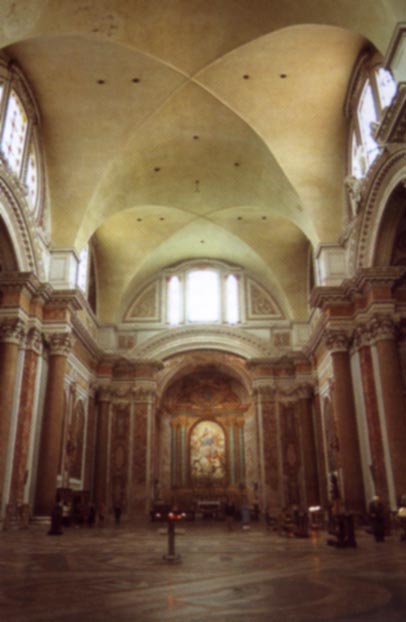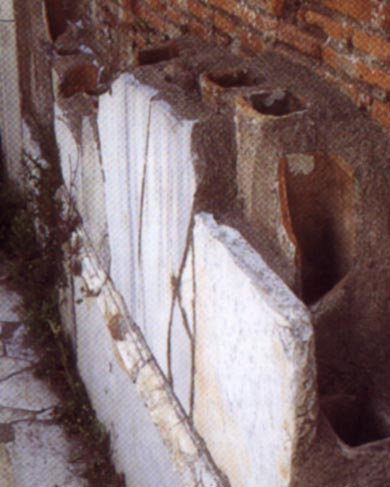
The Apodyterium: These were the changing rooms where bathers would leave their clothes. Attendants watched over the clothing while bathers went about their routine, but theft was fairly common. Wealthy bathers with expensive clothes often employed personal slaves to watch their clothing.

The Frigidarium: The cold room. This was the main room of the thermae, dominated by a large pool of cold water. Here some bathers would plunge into the cold water after coming from the warm room, while others swam here, and still others began their bath here. Surrounding the pool would be open areas used for games and exercise before the bath.

The Tepidarium: The warm room. This room was used mainly to insulate the hot room from the cold room. Bathers would use it to cool down when coming from the hot room to the cold room, or to acclimate themselves to warmer temperatures before proceeding to the hot room. Arbitrarily, this room would be at the center of the thermae.
The Caldarium: The hot room. This room had many different layouts, depending on the thermae in question. It could have either a central pool of hot water, or several pools around the perimeter. At some baths, bathers would wear wooden sandals to protect their feet from the hot floors. Even the walls of this room were heated.
The Hypocaust: This was the heating system that would heat the floors and walls or the heated rooms, as well as keep the water warm. It was a system in which the floor was supported by stacked bricks, called pilae, and the wall was attached to hollow bricks, or tubuli, so that hot air could circulate under the floor and in the walls. The air and water was first heated in the praefurnium, or furnace, and then circulated throughout this underground system. In addition to this, tanks called testudo were connected to the heated baths. These tanks rose to just below the bath floor and were constantly heated, so that the hot water rose from the testudo to replace the cold water, which flowed down to the testudo to be reheated.

Sudatorium, also Laconicum: These were rooms immediately surrounding the hot room, where bathers could sit in Turkish bath-like steam rooms or dry saunas. They were also heated by the hypocaust system.
Xystus: This was a promenade that led around the thermae to various sitting-rooms, gardens, fountains, and even libraries, theatres, and small stadiums. It was usually lined with statues and sculpture, primarily of the emperors who built the thermae.
Exedrae and Palaestrae: These were the excersize grounds and gymnasiums, respectively, that bathers used to work up a sweat and have some fun before actually taking the plunge into the frigidarium or sliding into the caldarium. Afterwards, they would most likely return here for a massage before redressing.